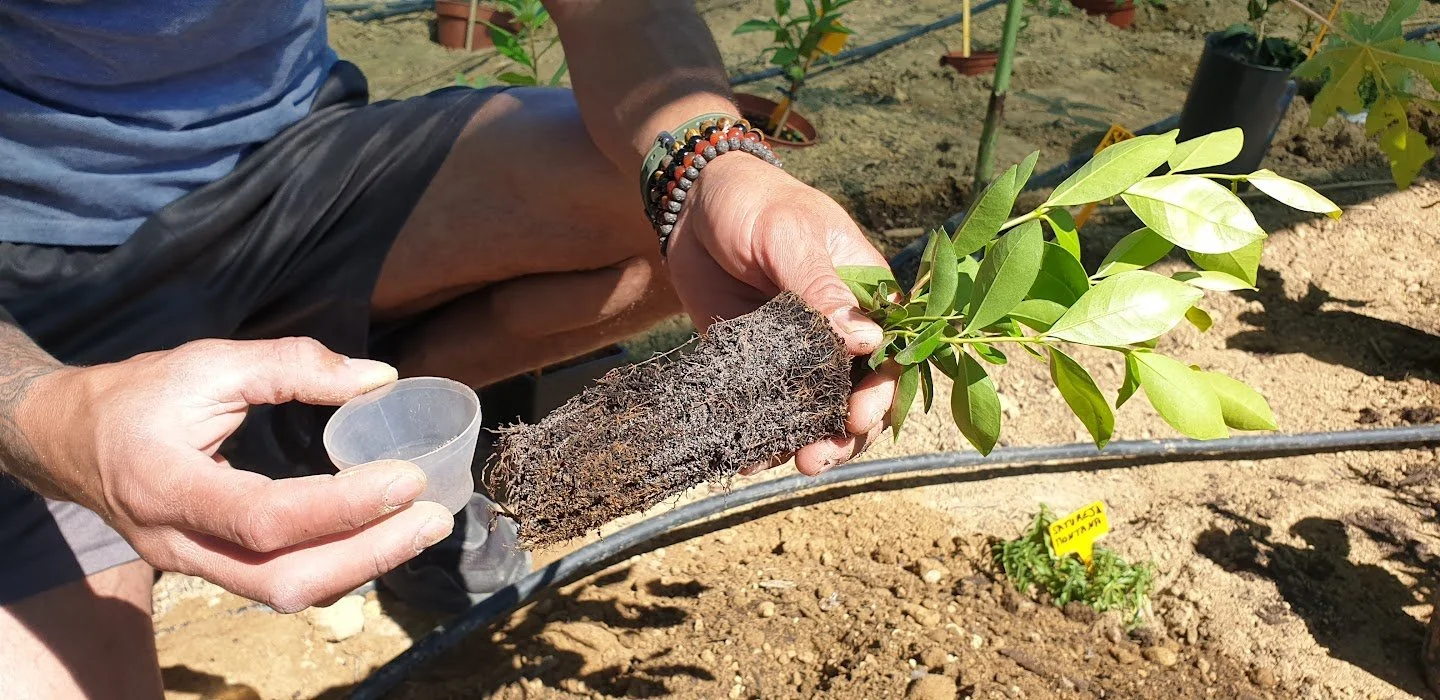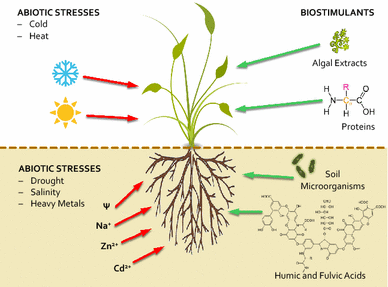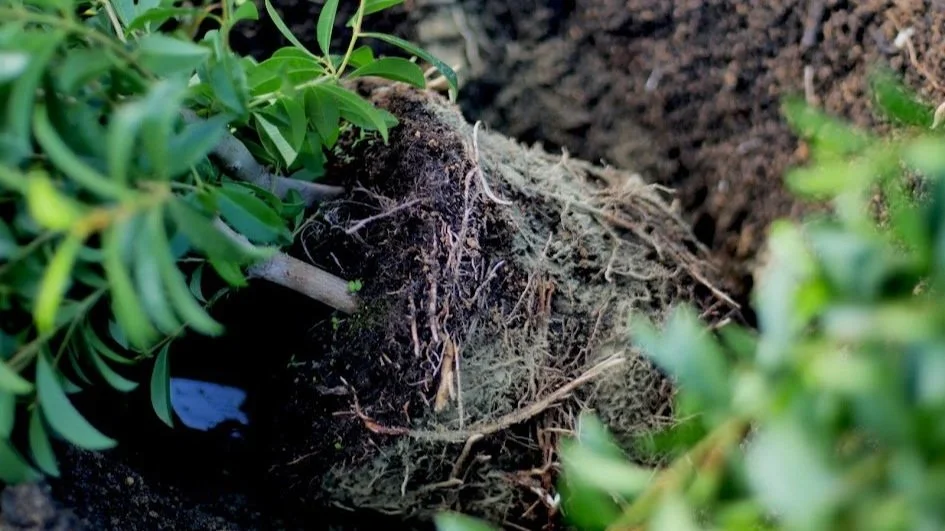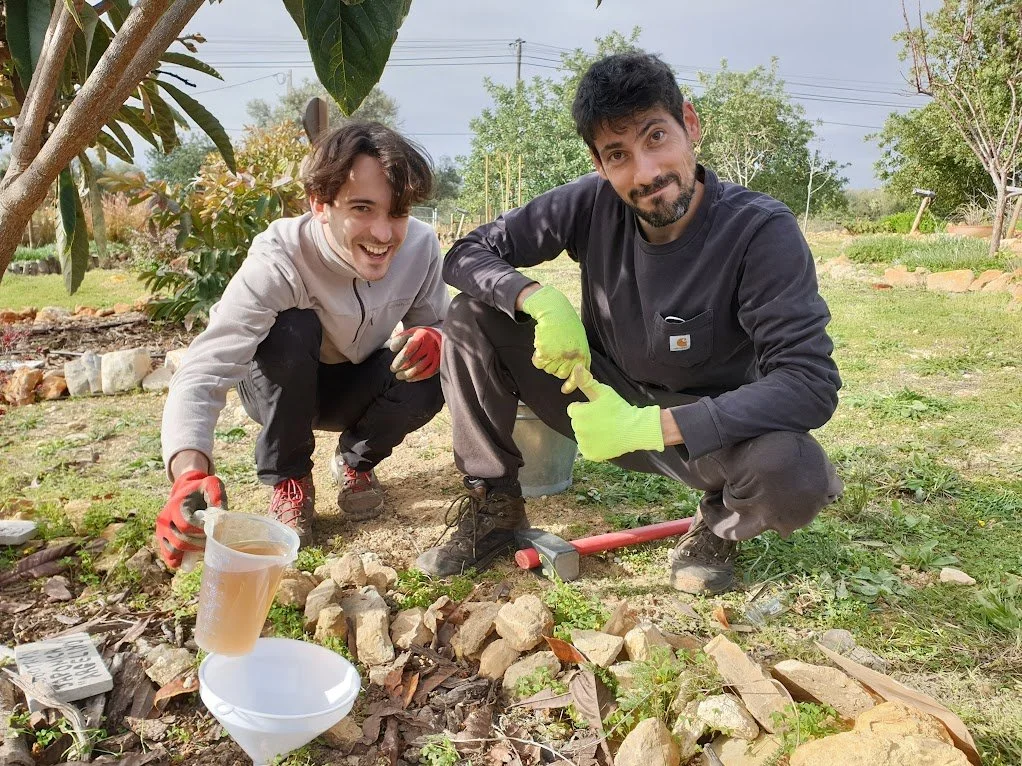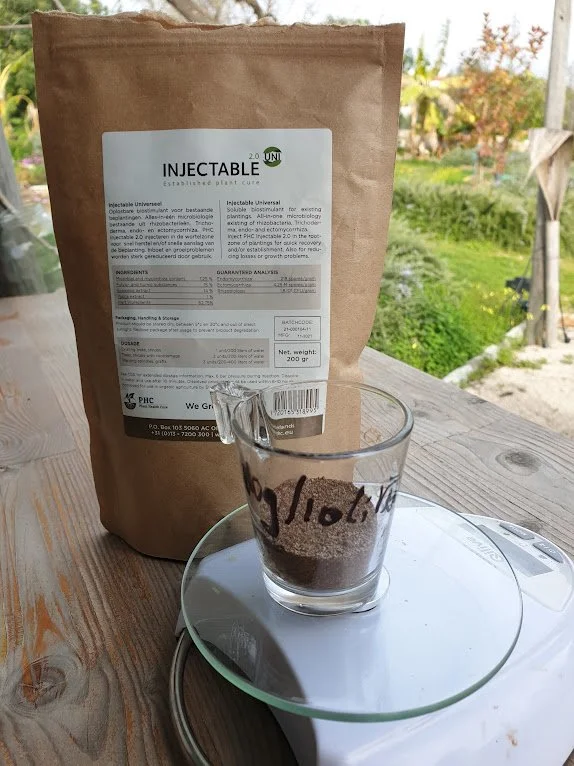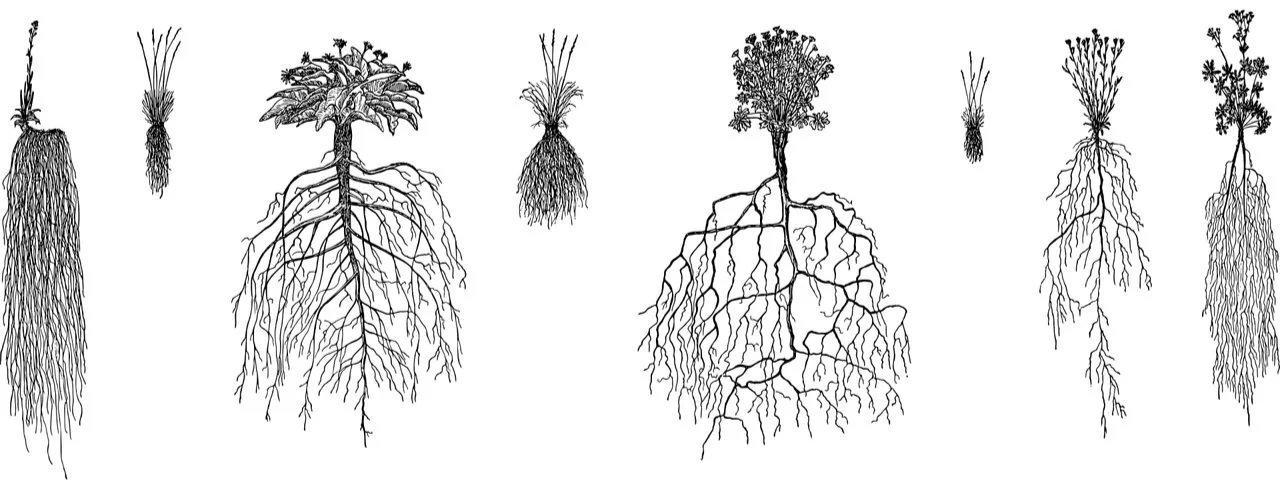Biostimulants
There’s a whole world in need of solutions!
In a worldwide context dominated by challenges such as ever-increasing water scarcity and overwhelming reliance on pesticides and chemical fertilizers, new innovative solutions must be found to bring higher efficiency and resiliency to our food growing systems and gardens.
Plant biostimulants may very well be one of the most promising among those much-needed solutions, adding to some time-tested approaches, including the uses of biochar, mulching and drought tolerant plants.
What are biostimulants and what are their benefits?
A plant biostimulant is any substance or microorganism applied to plants that help improve a plant’s natural processes. These factors can help reduce the use of chemical fertilizer by enhancing the plants own capacity to develop in an optimal way.
Biostimulants protective effects against abiotic stress.
By Oosten, Pepe, Pascale, Silletti, Maggio - https://commons.wikimedia.org/wiki/File:Graphical-abstract-Biostimulants-have-protective-effects-against-abiotic-stress.gif
More precisely, there are three types of benefits:
enhanced nutrition efficiency (help the roots gain better access to soil nutrients)
higher abiotic stress tolerance (make the plant more resistant to cold, heat, drought, or flooding)
improved crop quality traits
Biostimulants promise to contribute in making agriculture more sustainable and resilient.
Although substances like algae extracts have been used since antiquity as biostimulants, this is a new field of research with many new studies and new exciting discoveries under way, with various other sources already being used in biostimulant compositions, such as humic acids, hormones and plant growth-promoting bacteria, among others.
Keep reading to find out how biostimulants can be defined by their nature…
Microorganisms
1 - Bacteria
Whenever we talk about bacterial plant biostimulants, we’re usually talking about Plant Growth-Promoting Rhizobacteria (PGPR), which promote plant growth by enhancing the rhizosphere activity (and in case you’re wondering, the “rhizosphere” is the narrow region of soil or substrate that is directly influenced by root secretions and associated soil microorganisms). The beneficial effect of these bacteria can be threefold:
enhancing and extending soil nutrient capture capabilities
Plants require to be provided with a broad range of soil-sourced nutrients (among others: iron, nitrogen, potassium and phosphorus, as well as microelements such as lithium, zink, copper, borium etc). The aim of bacterial stimulation is to make these elements bio-available to plants. Bacteria create or extend the plant’s nutrient capture tools. They facilitate extraction, transport or solubilization of nutrients to the root system.
promoting plant growth through phytohormones production
Plants naturally create growth hormones that will either facilitate or modify development. Some bacteria can also synthesize certain growth hormones which the root system can benefit from. This is often resulting in greater and deeper root ball growth, better extension of cells and plant vigour.
neutralizing pathogenic microbes
Insertion of bacteria in the soil will create competition for resources within the existing bacterial population. A well chosen bacterial agent will lead potentially harmful competitors to starve, diminishing risks of these giving rise to plant infection.
Happy WWOOFers Jules PERCHER and Miguel PEREIRA, inoculating a Eriobotrya Japonica with a mycorrhizal fungi biostimulant.
2 - Mycorrhizal fungi
Put very simply, mycorrhizal fungi (or mycorrhizae) are mostly mutualistic fungi which associate with plant roots, helping the plant get more nutrients and be more resistant overall. Mycorrhizae also act as a network of fine threads (hyphae) between the roots of different individuals. Plants can be inoculated with the beneficial fungi at the time of sowing or transplanting, but also at later stages, even as mature trees.
There are two main types of mycorrhizae, the endo-mycorrhizae and the ecto-mycorrhizae — the first type interacts with the plant roots by entering them, while the second colonizes the outside of the root system. Most fruit trees benefit from endo-mycorrhizae. The agro-industry is now proposing the application of cocktails of endo and ecto-mycorrhizae, hoping that the roots of the plant will find the right fungi to collaborate with.
Learn more by reading our detailed article on Mycorrhizae.
Substances (organic or inorganic)
1 - Plant and algae extracts
Algae are natural enhancers of plant growth and can aid alleviation of some abiotic stresses (e.g. high salinity). They also enhance the harvested volumes of fruits/crops. Micro and macro-algae can be applied on roots or foliage depending on the type of product chosen.
2 - Amino acids
Amino acids are selected subparts of proteins, sourced from animal or vegetal origins. After application on leaf or roots, they mainly enhance nutrient uptake and allow better growth and quality of fruits.
3 - Humic substances or assimilated substances (such as humic acids, fulvic acids)
Humic substances are compounds originating from soil organic matter. They regulate ecological processes and are an important source of nutrients and also help nutrient transport through ion channels in the root system cell.
4 - Non-nutritive mineral substances
Among these substances a lot of research is put on monosilicic acid (used as a foliar application). It acts as a biostimulant for the growth of the plant and helps the plant overcoming infections and stress factors like heat, drought and salinity. So, when bio-active silicic acid is added, plants show an improved growth, higher yield, reduced mineral toxicities and better disease and insect resistance.
Biostimulants and drought resistance
Great hope is put on biostimulants for improving plant resilience in water-limited environments. Indeed they can stimulate root versus shoot growth, which would allow plants to penetrate deeper soil layers during the drought season. Similar positive effects can be reached by those microbial biostimulants that create absorption surfaces around the root systems and sequester soil water in favour of the plants.
Our use of biostimulants at Orchard of Flavours
1 - Mycorrhizae
We use a product by a Dutch company, Plant Health Cure, frontrunner in the field of mycorrhiza technology and soil biology. At Orchard of Flavours, most of our trees are inoculated with mycorrhizae at the transplanting time. It is by far the most efficient and cheapest way.
2 - Plant Growth-Promoting Rhizobacteria
For our PGPR needs, we also use the products of the above-mentioned Dutch company, more specifically their product called Compete Plus. This product is directly used in our drip irrigation system.
3 - Monosilicic acid
With another Dutch company, ReXil Agro, we started in April 2021 an experiment on the foliar application of monosilicic acid once every two weeks on a limited number of trees so that we have a control group.
Learn more about biostimulants
“Biostimulants and Their Role in Improving Plant Growth under Abiotic Stresses” — Ana Carolina Feitosa de Vasconcelos and Lúcia Helena Garófalo Chaves
“Plant biostimulants: Definition, concept, main categories and regulation” — Patrick du Jardin
Académie des bio stimulants (Biostimulant’s academy — French)
The Power of Mono-Silicic Acid (Agro-Solutions)
Where to find biostimulant-related products
This article was compiled by Miguel COTTON, Jules PERCHER & Miguel PEREIRA. If you have any questions or suggestions, do not hesitate to contact us. miguel@orchardofflavours.com

